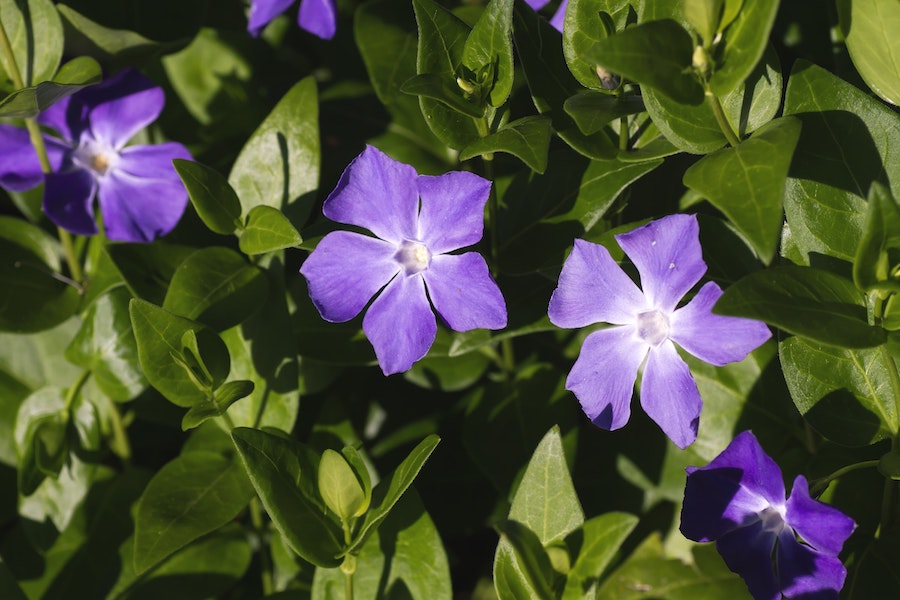Garden angels or thugs? 4 plants you might not want in your garden
As trendy bamboo hits the headlines for its invasive nature, we take a look at four common plants which may want to take over your garden.
With reports that neighbours are increasingly at war over invasive bamboo plants spreading out of control, it may be worth considering what other hard-to-get-rid-of species you’re unwittingly planting in your garden.
Of course, there’s a difference between invasive and vigorous – invasive plants include Japanese knotweed, giant hogweed and Himalayan balsam, which are banned from sale in this country – but there are other plants which may spread too rapidly for your liking, and may be difficult to get rid of once they are planted in the ground.
1. Japanese anemone (A. x hybrida)

Japanese anemones can take over
Don’t be fooled by the dainty-looking late summer/early autumn flowers in shades of white, pink and mauve, because these perennial favourites growing up to 1.2m tall, are also total garden thugs.
Once you’ve planted them, I hope you really like them because it’ll be really difficult to erase them from your plot. They will invade the space of neighbouring plants, taking nutrients from the soil as they go – and it’s extremely difficult to totally eradicate them, unless you want to do some back-breaking digging.
They are, however, very pretty, so if you want them in your garden, grow them in a raised bed or in a container so you can keep control of them.
2. Periwinkle (Vinca major and Vinca minor)

Vinca will scramble through shrubs and other plants
Periwinkles are ground cover trailing shrubs which provide eye-catching winter foliage and early flower in shades of blue and white.
They look good in shady spots or wilder areas of the garden and will stop weeds colonising, but can be invasive if not cut back because they send out runners which root when they touch the soil.
So avoid planting them in ordinary borders where they will compete with other plants. If you want to keep them, cut them back to the ground in winter and they will come up again with fresh new growth – but make sure you remove any runners you see popping up where they’re not wanted.
3. Lily of the valley (Convallaria majalis)

They smell amazing but they can spread rapidly
Each April and May, when the rich scent from the pretty white bell flowers of this pint-sized perennial bulb fill the air, I remind myself why I didn’t dig up the mass of these vigorous plants adorning not only a small wooded area of my garden, but also popping up unprompted in flower beds and borders.
Like many invasive groundcovers, convallaria propagates itself from underground rhizomes, producing seeds and spreading rapidly as the root-like rhizomes creep in all directions, throwing up small upright shoots (called ‘pips’) every few inches.
You can dig them up, but you mustn’t leave any roots in the ground or they will re-emerge. Alternatively, cut the flowers before they run to seed.
If you have a small garden, my advice would be to grow lily of the valley in pots, ideally in semi shade close to the patio, where you can inhale the rich scent come late spring, without worrying that the plants are going to take over.
4. Montbretia (Crocosmia x crocosmiiflora)

Montbretia can be hard to eradicate
When I first moved to my current home more than 20 years ago, my garden was awash with hybrid montbretia, the corms producing spear-like leaves and orange flowers in high summer, and multiplying with a vengeance once they took hold.
The underground corms, so overcrowded and undernourished, were nevertheless unstoppable and small fragments of root quickly established themselves. It took years of digging to get rid of them.
You can dig up montbretia but if you leave just one corm, it will re-emerge. And don’t chuck it on the compost heap because when you spread the compost on another area, the montbretia is likely to appear again.
However, you can buy less invasive and more showstopping cultivated varieties such as ‘Lucifer’ – which has a brilliant red flower – so there is still a place for them in my garden.
The Press Association
Latest posts by The Press Association (see all)
- 3 easy Mary Berry recipes to make this season - November 22, 2024
- In Pictures: Party stalwart kept New Labour in touch with traditional supporters - November 21, 2024
- 6 easy indoor exercises to try this winter – and why they are good for you - November 19, 2024
- Martin Clunes: I can’t afford to retire – I’ve got too many horses - November 19, 2024
- How to avoid plant losses, flowering disappointments and container catastrophes - November 17, 2024





















